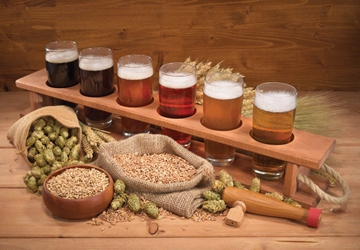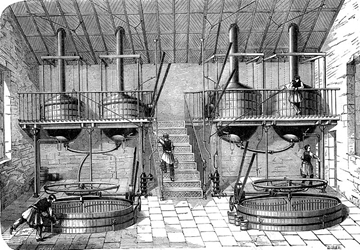Beer is as old as humanity. It is one of the first fermented beverages in the world, and it was already enjoyed by most ancient civilizations. Beer has been around for thousands of years, and its recipe has changed little over time. To taste beer is to taste history.
Let’s talk about beer’s history from its ancient beginnings to the 21st century. The more you know about your favorite beverages, the more you enjoy them. Besides, beer knowledge is a wonderful conversation starter! Pour yourself a cold one and let’s get started.

Ancient Beginnings
Beer is made with malted barley. The grain was domesticated 7,000 years ago, probably in modern-day Iran. It only took for someone to leave damp barley unattended for the first beverage, similar to beer, to ferment spontaneously.
It wasn’t long for people to replicate the spontaneous transformation of gains into an alcoholic beverage on purpose. We know people in ancient Egypt and Mesopotamia produced large amounts of beer, and the beverage was an essential part of these cultures, making beer thousands of years old.
The Ancient Greeks and Romans also embraced the grain-based beverage and took their love for beer to every corner of the known world. By the Roman collapse, beer was already typical everywhere in Europe.
The Middle Ages
Hops became a beer ingredient in the 800s but became prevalent until 1516, when William IV, Duke of Bavaria, adopted the beer purity law or Reingeitsgebot. The law stated that beer had to be created exclusively with malted barley, hops and water.
Catholic monasteries undertook beer-making during the Middle Ages, perfecting its production to something not dissimilar to what we drink today. It’s no surprise many beer styles today have origins in the Middle Ages, which is why many beers feature monks on their labels. Many beer styles were created in Germany, the Czech Republic, England and Belgium, and these styles still exist today.

The Industrial Revolution and Beyond
The Industrial revolution of the 1850s allowed brewers to mass-produce beer. During this stage, beer was radically standardized, and many craft beer styles were forgotten.
Eventually, the creation of large companies producing uninteresting beer dominated the market; European immigrants took their love for beer and beer-making expertise to America, South Africa, India and Australia. By the 20th century, beer was a world phenomenon, with every major beer market dominated by a few players producing pale lagers and other commercial styles. Only the most traditional beer-producing countries, including Germany, Belgium, Ireland and England, kept a repertoire of beer styles of all colors and flavors.
The Craft Beer Movement
The craft beer scene began in the 1960s, mainly in the United States. Home brewers established the first commercial micro-breweries, and soon the country and then the world saw the birth of hundreds, if not thousands, of small beer-producing companies.
Craft brewers increased beer quality exponentially. They also brought forgotten beer styles back to life and created new ones. In just over a century, the number of brewers in the United States went from 4 to over 2,500. The history is no different in most other countries. Beer is more varied than ever, and although a few international companies still dominate the market, finding craft beer is now easy, and the beer is good!







